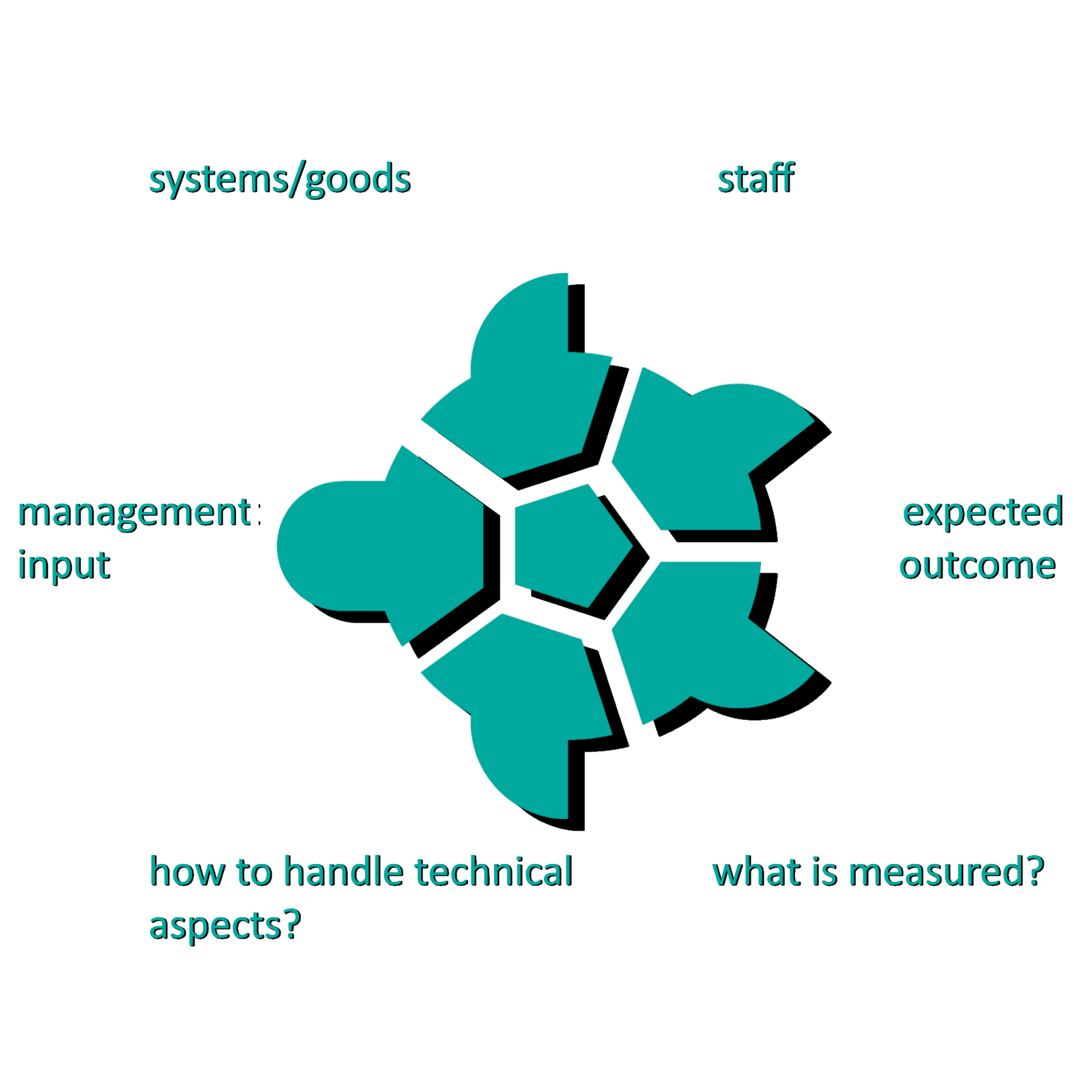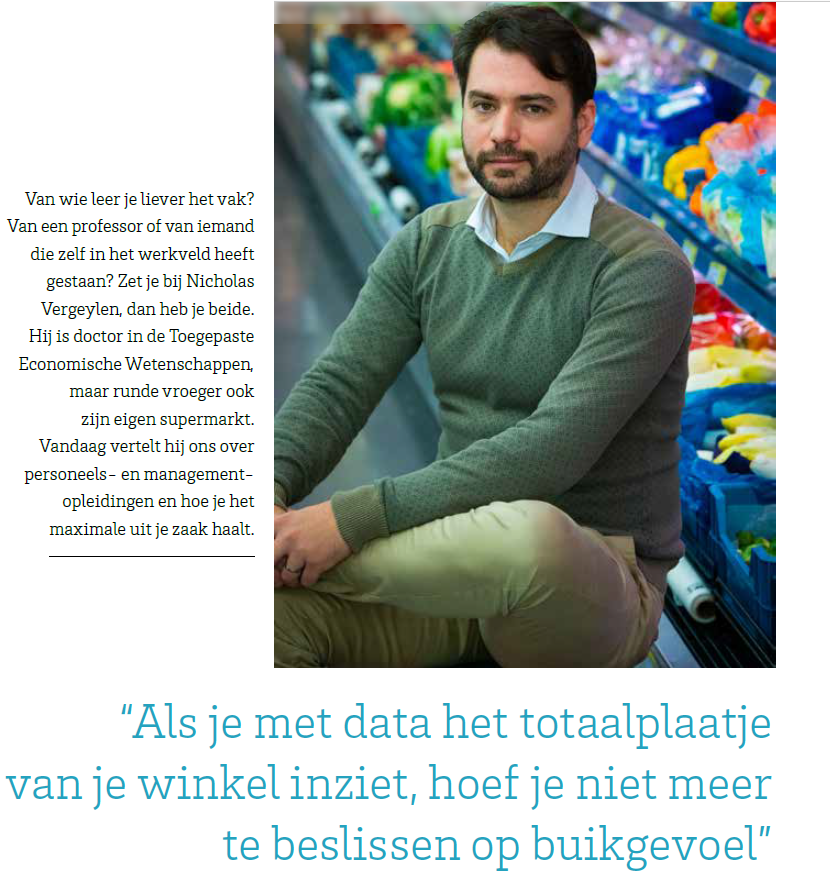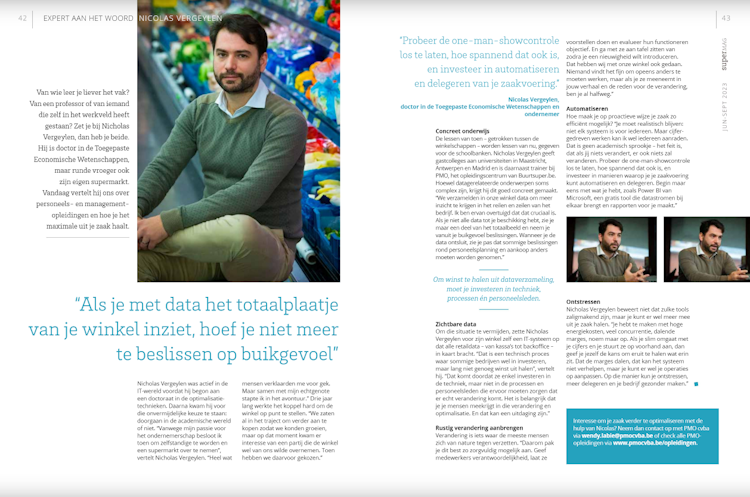Data driven management
In this article, I talk about some of my experiences and services in making a company more mature by changing its management process. Below I discuss the content somewhat more in depth.
The one man show
A store owner once told me there was only one key to his store: the one in his pocket.
It is a classic phenomenon for managers to feel the need to control operations so much so that they become so called micro-managers: they want to make all decisions on all levels. However, because a lot of small impact decisions are necessary at the operational level, this consumes all the time and energy these managers have so that they postpone or even fail to make the important decisions at the tactical or strategical levels, where the impact is much larger, but -seemingly- less urgent.
Retail example:
The manager orders dairy products because an error can imply a lot of waste.
Consequence:
The store manager is always physically required to order dairy. Staff is not engaged in managing this aisle.
Alternative:
Measure waste and use these measurements in a coaching system so that people can learn. Decision support systems, e.g. detecting uncommon volumes in the order, can help significantly in facilitating the process.
IT services example:
A department or division manager hires a manager for a project, but keeps having individual meetings with the team and external partners to talk about scope and progress.
Consequence:
hired manager is not empowered and is demotivated. General negative ambience due to lack of clarity. This situation also risks affecting Scope, budgets and timing in a negative way.
Alternative:
Agree with the manager on the project plan, which contains a validated requirements document, and quality gateways. Measure work realized and costs incurred, use these measurements to compare to the plan, and challenge the manager and agree on risk strategies.
When introducing objective data and insightfull information into management activity, at the end of the day, managers remain fully accountable for their results, but they are not necessarily responsible anymore: delegation is introduced.
perfect is the enemy of good. - Voltaire
The argument made here is that the adage "anything you do yourself is done better" doesn't imply you should do everything yourself. It does, however, mean you need to accept room for error. The real task as a manager is to come up with a system to have people correct their errors over time.
The one way path
The organization will not join you into retirement.
Your organization is typically based on the so called going concern. Unfortunately, the going concern does not apply to you as a person: sooner or later, you will need to hand over the business to someone else.
When handing over business activities you want this to be as easy and lucrative as possible. Resource flexibility (e.g. tasks and processes are standardized) is what makes transfer easy. Recurring cash flows are what makes your business valuable. This implies the cash flows need to occur without your direct involvement. that means that operations, which will consist of your staff, your processes and your systems, should not contain your continuous ad-hoc involvement.
The protagonist becomes the audience.
First streamline your operations so that the organization can grow. Don't expect it to work the other way around.
Two milestones of increasing organizational value can be marked by a checkbox:
- Can your organization run without you?
- Can your organization grow without you?
Solving this puzzle requires investing in people, processes and systems via a change project. The project should be SMART, meaning it's feasible. Usually, taking little but meaningful steps one after the other is better than trying change everything at once.
Rebuilding the foundations
Data driven management supplements the adage "To measure is to know" with "to measure is to grow".
A good way to think about your operations is by identifying the processes that interact and deliver a consistent part of the organization's value. A process can be described using the so called process turtle .
- What is needed in doing the work?
- Who will be doing the work, and are they trained?
- Are there any important rules in doing the work?
- What will be measured? And how will this be used in evaluation?
- What are the desired outcomes of the process (e.g. target profit), and what input/guidelines will be given to the process?

Answering these questions, keeping in mind to make the processes as flexible as possible, may seem difficult at first, but will pay off greatly in the future. The answers to the questions are the process design, meaning it's a static description useful for communication. The actual day-to-day processes then consists of measurement and usage of the measurements in steering the process to maximize its value.
No free lunch
There is no such thing as a free lunch, meaning there are investments to be made if you want to grow in maturity. Time, energy and funding will be required. Therefore, there is no one-size-fits-all solution. It may be interesting to evaluate what you need most in order to make a first move towards the self managing teams we all want.
Sounds interesting? Click on the article below to read more and get in contact with me.


